
How Tree Limbs and Shrubs Can Invite Pests
- Understanding the Risk of Pests in Your Yard
- How Tree Limbs and Shrubs Can Attract Pests
- Types of Pests That Tree Limbs and Shrubs Attract
- Preventing Pests Through Proper Plant Care
- Importance of Regular Tree and Shrub Maintenance
1. Understanding the Risk of Pests in Your Yard
Many homeowners spend a lot of time and effort creating beautiful outdoor spaces with trees, shrubs, and lush greenery. However, what many don't realize is that these very plants can sometimes invite unwanted pests into their yards. Pests such as ants, termites, mosquitoes, and even rodents are often attracted to tree limbs and shrubs, causing damage not only to your plants but also potentially spreading to your home or garden. Understanding how and why tree limbs and shrubs can be a magnet for pests is essential in preventing these problems.
While trees and shrubs are beneficial for your landscape, they can become a breeding ground for a variety of pests if not properly maintained. The structure of trees, along with the lush leaves and branches of shrubs, offers shelter, food, and easy access points for insects and other creatures. Let’s delve deeper into how exactly these plants invite pests into your yard.

Brody Services Inc DBA Queen "B" Pest Services
LochearnBaltimore CountyMaryland
3320 St Lukes Ln, Gwynn Oak, MD 21207, USA
2. How Tree Limbs and Shrubs Can Attract Pests
Tree limbs and shrubs offer several features that make them an appealing habitat for pests. Here are the key reasons why they may be inviting more critters than you’d like:
- Overgrown Branches: When tree limbs and shrubs become overgrown or poorly maintained, they create ample hiding spots for pests. Overhanging branches can also provide easy access to your home, allowing pests to move from the trees to the roof or windows, leading to potential infestations.
- Decaying Wood: Dead or decaying branches in trees and shrubs are particularly attractive to termites, ants, and beetles. These pests are drawn to rotting wood, which provides a source of food and shelter. If left unchecked, decaying wood can become a breeding ground for pests.
- Moisture Retention: Dense shrubbery or thick tree canopy can trap moisture, creating a damp environment perfect for pests like mosquitoes, fungus gnats, and mildew. Stagnant water and high humidity levels can also make your yard a breeding ground for insects.
- Fruit and Flowers: Certain trees and shrubs, especially fruit-bearing plants, attract pests that feed on the flowers or fruit. Bees, wasps, flies, and even rodents are drawn to the sweet nectar or fruits. This can create a nuisance and sometimes attract even larger pests, like raccoons or squirrels, into your yard.
3. Types of Pests That Tree Limbs and Shrubs Attract
Now that we understand why tree limbs and shrubs can attract pests, it’s helpful to know which pests you might be dealing with. Some common pests that can invade your yard due to overgrown or decaying trees and shrubs include:
- Termites: One of the most damaging pests, termites can easily infest trees with decaying wood and dead limbs. These pests are notorious for causing significant damage to wooden structures in your home, making early detection important.
- Ants: Ants are often drawn to trees with rotting wood, and they can form colonies within the tree limbs and shrubbery. Carpenter ants are especially destructive, as they can hollow out wood, weakening the structure of your trees and nearby structures.
- Beetles: Certain species of beetles are drawn to decaying plant matter. They burrow into tree limbs, where they lay their eggs, which can lead to further damage to the tree as well as the surrounding plants.
- Mosquitoes: Standing water in dense shrubs or tree canopies provides an ideal breeding environment for mosquitoes. These pests can breed in even the smallest amounts of stagnant water, making your outdoor space uncomfortable and dangerous during the warmer months.
- Rodents: Tree limbs that reach your roof or windows offer easy access points for rodents, including squirrels and mice. These pests are drawn to trees for food, shelter, and a pathway into your home. They can cause serious damage to insulation, wiring, and roofing.
4. Preventing Pests Through Proper Plant Care
Taking proactive steps to properly care for your trees and shrubs can help prevent pest invasions. Here are some key steps to consider:
- Regular Pruning: Trim back overgrown branches regularly to ensure that tree limbs do not hang over your roof or windows. This reduces access points for pests and also helps maintain the health of the trees. Pruning also improves air circulation and light penetration, which can prevent the growth of mold and fungi.
- Removing Dead or Diseased Wood: Remove any dead or decaying branches or shrubs immediately. This not only prevents pests from nesting in the rotting wood but also improves the overall health of your plants.
- Proper Watering Techniques: Avoid over-watering your trees and shrubs. Ensure that your plants are not sitting in standing water, as this creates a breeding ground for mosquitoes and other pests. Drainage around the base of trees and shrubs should be adequate to prevent water accumulation.
- Maintaining a Clean Yard: Keep your yard free of fallen leaves, branches, and other debris that can attract pests. This includes cleaning up after pruning and ensuring that organic matter is properly disposed of.
- Using Natural Pest Control Methods: Consider using natural pest control options like insecticidal soaps, neem oil, or diatomaceous earth to treat plants that are infested with pests. These treatments are less harmful to the environment and more effective in controlling pest populations.
5. Importance of Regular Tree and Shrub Maintenance
Regular maintenance of your trees and shrubs is the best way to prevent pest problems. By staying on top of pruning, removing dead limbs, and maintaining good hygiene in your yard, you can greatly reduce the risk of attracting pests. Not only does this keep your plants healthy, but it also minimizes the chances of pests finding a home in your trees and shrubs.
If you're unsure about how to properly care for your trees and shrubs, or if you’re dealing with a pest infestation already, consider reaching out to a professional pest control service. At PestControlHub, we offer expert advice, services, and products to help you maintain a pest-free outdoor environment and keep your trees and shrubs in great shape.



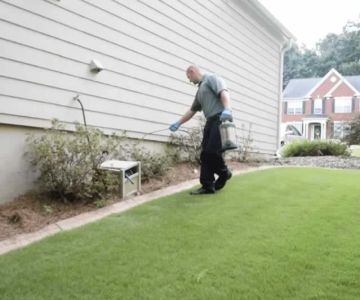


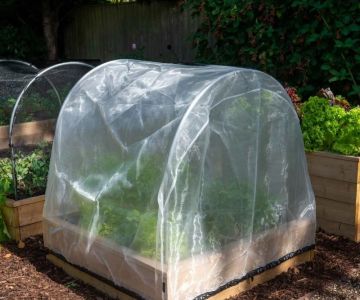
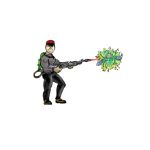 Pest-End4.0 (302 reviews)
Pest-End4.0 (302 reviews)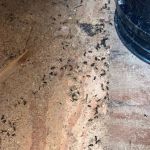 Protective Pest Management5.0 (60 reviews)
Protective Pest Management5.0 (60 reviews) Bed Bug Solutions of Southwest Michigan LLC4.0 (5 reviews)
Bed Bug Solutions of Southwest Michigan LLC4.0 (5 reviews) Shell Pest Control Systems4.0 (29 reviews)
Shell Pest Control Systems4.0 (29 reviews)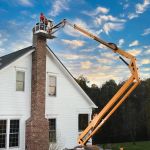 City Wide Exterminating5.0 (250 reviews)
City Wide Exterminating5.0 (250 reviews) Prince Pest Pros, LLC4.0 (151 reviews)
Prince Pest Pros, LLC4.0 (151 reviews)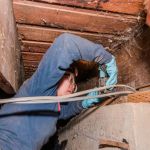 How to Use Smoke Tests to Reveal Pest Entry Points – A Simple Guide
How to Use Smoke Tests to Reveal Pest Entry Points – A Simple Guide How to Keep Pests Out of Your Crawl Space: Expert Tips for Prevention
How to Keep Pests Out of Your Crawl Space: Expert Tips for Prevention How to Address Pest Issues in Spring Planting for Healthy Gardens
How to Address Pest Issues in Spring Planting for Healthy Gardens How to Create a Pest-Resistant Garden
How to Create a Pest-Resistant Garden How to Conduct a Pest Risk Assessment at Home – Expert Guide
How to Conduct a Pest Risk Assessment at Home – Expert Guide How to Use Preventative Barriers in Crawlspaces – Expert Home Protection Guide
How to Use Preventative Barriers in Crawlspaces – Expert Home Protection Guide